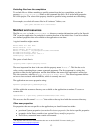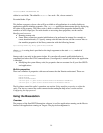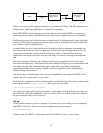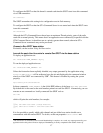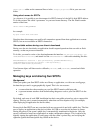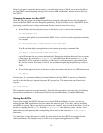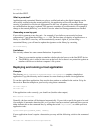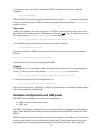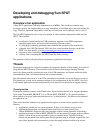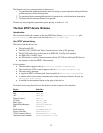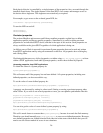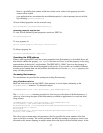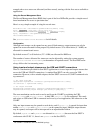
21
When the switch is specified a basestation will still be correctly identified if one is available, but if
no basestation is available the
port
property will be set to
dummyport.
Your own host application
You should base your host application on the template provided. Your host application can open
connections in the usual way. The classes required to support this are in
spotlib
_
host
.
jar
,
spotlib_common
.
jar
and
squawk
_
classes
.
jar
(all in the
lib
sub-directory of the SDK install
directory). These are automatically placed on the build path by the ant scripts but you might want to
configure host projects in your IDE to reference them to remove compilation errors.
If your application requires non-standard Java VM parameters, then you can add these like this:
ant host-run –Dhost.jvmargs=”-Dfoo=bar –Xmx20000000”
Incorporating pre-existing jars into your host application
You can include code from pre-existing jar files as part of your application. To do this add the jars
to your user classpath property, either in build.properties or on the command line using
“
-Duser.classpath=<filename>
”, e.g.
ant host-run –Duser.classpath=util.jar
You can specifiy multiple jars as a list separated by a classpath delimeter (“;” or “:”). Note that you
may need to enclose the list in quotes.
You can create a jar suitable for inclusion in a host application with the ant target “
make-host-jar
”,
e.g.:
ant make-host-jar –Djar.file=util.jar
Configuring network features
Mesh routing
Every SPOT can act as a mesh router, forwarding packets it receives on to other SPOTs. It begins
doing this automatically as soon as your application opens a
radiostream
or
radiogram
connection
(see below). You do not need to perform any extra configuration for this to happen. However there
are two special situations:
1. You want the SPOT to act as a mesh router but the application running it does not use the
radio.
2. You want the SPOT to act just as a mesh router, with no application running on it.
For situation 1 above you should set the system property
spot.mesh.enable
to true, like this:
ant set-system-property –Dkey=spot.mesh.enable –Dvalue=true
With this property set the SPOT will turn on the radio at start-up and immediately begin routing
packets. It will also ensure that the radio stays on, regardless of the policies set for application
connections. Therefore a SPOT with this option set will never go into deep sleep.



